La Crosse Technology WS-9032U Handleiding
La Crosse Technology
Weerstation
WS-9032U
Bekijk gratis de handleiding van La Crosse Technology WS-9032U (19 pagina’s), behorend tot de categorie Weerstation. Deze gids werd als nuttig beoordeeld door 37 mensen en kreeg gemiddeld 3.7 sterren uit 19 reviews. Heb je een vraag over La Crosse Technology WS-9032U of wil je andere gebruikers van dit product iets vragen? Stel een vraag
Pagina 1/19

WS-9032U
Wireless 433 MHz
Weather Station
Instruction Manual
Contents
Language Page
English 2
French 23
Spanish 46
R
FCC ID: OMO-01RX (Receiver), OMO-01TX (transmitter)
FCC DISCLAIMER
This device complies with part 15 of the FCC rules. Operation is subject to the
following two conditions:
(1) This device may not cause harmful interference.
(2) This device must accept any interference received, including interference that
may cause undesired operation.

TABLE OF CONTENTS
Topic Page
Inventory of Contents/ Additional Equipment 3
About WWVB 3
Quick Set Up Guide 4
Detailed Set Up Guide
Battery Installation 4
Start Up Sequence 6
Explanation of LCD Information 7
Function Key Layout 8
Program Mode
Overview of Programming Sequence 8
LCD Contrast Setting 8
Time Zone Setting 8
DST ON/OFF Setting 9
Radio-controlled Time ON/OFF Setting 9
12/24-hour Time Mode Setting 9
Setting the Time/Date Manually 9
Temperature Measuring Units (˚F/˚C) 11
Air Pressure Measuring Units (inHg/hPa) 11
Relative Pressure Setting 11
Forecast Sensitivity Setting 11
Features and Operation
Time Alarm Setting and Operation 12
Moon Phase 13
Minimum/Maximum Temperature/Humidity 13
Multiple Remote Temperature/Humidity Sensors 14
Comfort Icon 15
Weather Forecast and Pressure Trend Indicators 15
Weather Icons 15
Weather Tendency Arrows 16
Barometric Air Pressure Reading 16
Air Pressure History Bar Chart 16
Mounting 17
Maintenance and Care 18
Troubleshooting Guide 19
Specifications 20
Warranty Information 20
INVENTORY OF CONTENTS
1. WS-9032U-indoor weather station
2. TX4U-remote thermo/hygro (temperature/humidity) sensor
3. Instruction manual and warranty card
ADDITIONAL EQUIPMENT (not included)
1. Five fresh AA 1.5V alkaline batteries.
2. One wall-mounting screw (optional)
ABOUT WWVB (radio-controlled time)
The NIST (National Institute of Standards and Technology-Time and Frequency
Division) radio station, WWVB, is located in Ft. Collins, Colorado and transmits the
exact time signal continuously throughout the United States at 60 kHz. The signal
can be received up to 2,000 miles away through the internal antenna in the indoor
weather station. However, due to the nature of the Earth’s Ionosphere, reception is
very limited during daylight hours. The indoor weather station will search for a signal
every night when reception is best. The WWVB radio station derives its signal from
the NIST Atomic clock in Boulder, Colorado. A team of atomic physicists continually
measure every second of every day to an accuracy of ten billionths of a second a
day. These physicists have created an international standard, measuring a second
as 9,192,631,770 vibrations of a Cesium 133 atom in a vacuum. For more informa-
REMOTE
THERMO-SEN SO R
433 MHz
tion about WWVB please see the NIST website at http://www.boulder.nist.gov/
timefreq/stations/wwvb.htm
QUICK SET-UP GUIDE
Hint:
Use good quality Alkaline Batteries and avoid rechargeable batteries.
1. Have the indoor weather station and remote thermo/hygro sensor 3 to 5 apart.
2. Batteries should be out of both units for 15 minutes.
3. Place the batteries into the remote thermo/hygro sensor first then into the in-
door weather station.
(All remote thermo/hygro sensors must be started before the indoor weather
station)
4. DO NOT PRESS ANY BUTTONS FOR 15 MINUTES.
In this time the indoor weather station and remote thermo/hygro sensor will start to
talk to each other and the indoor weather station will show both the indoor tempera-
ture and humidity and the outdoor temperature and humidity. If the indoor weather
station does not display all values after the 15 minutes please retry the set up as
stated above. After all values are displayed for 15 minutes you can place your re-
mote thermo/hygro sensor outdoors and set your time.
The remote thermo/hygro sensor should be placed in a dry, shaded area. The re-
mote thermo/hygro sensor has a range of 330 feet. Any walls that the signal will
have to pass through will reduce distance. An outdoor wall or window will have 20 to
30 feet of resistance and an interior wall will have 10 to 20 feet of resistance. Your
distance plus resistance should not exceed 330 ft. in a straight line.
NOTE:
Fog and mist will not harm your remote thermo/hygro sensor but direct rain
must be avoided.
To complete the set up of your indoor weather station after the 15 minutes have
passed please follow the steps in the Detailed Set Up Guide.
Note:
The remote thermo/hygro sensor transmits a signal every 3 minutes; after the
batteries have been installed, the indoor weather station will search for the signal for
a duration of 5 minutes. If there is no temperature reading in the OUTDOOR LCD
after 5 minutes, make sure the units are within range of each other, or repeat the
battery installation procedure.
DETAILED SET-UP GUIDE
I. Battery Installation
Batteries will fit tightly. To avoid start-up problems, make sure that the batteries do
not spring free. Also be sure to insert alkaline batteries into the remote thermo/hygro
sensor first, then the indoor weather station. Initial set up should be done with the
remote thermo/hygro sensor and indoor weather station in the same room. The units
should be permanently mounted only after the signal reception has been verified.
A. Remote Temperature and Humidity Sensor
1. Pull the cylindrical rain cover off the transmitter.
2. Remove the battery cover (located on the backside of the transmitter, above the
mounting post and bracket). Press the arrow and slide the battery cover off.
3. Observing the correct polarity install 2 Alkaline AA batteries.
4. Replace battery cover, and place rain cover snugly onto the transmitter.
B. Indoor Weather Station
1. Remove the battery cover (the cover has white writing on it).
2. Observe the correct polarity, and install three Alkaline AA batteries.
+
+
+
SIZ E AA LR6
SIZ E AA LR6
SIZ E AA LR6
GB P.2 GB
P.3
GB P.4 GB
P.5
Battery Cover
REMOTE
THERMO-SENSOR
433 MHz
+
SIZE AA LR6
+SIZE AA LR6
Rain Cover
Mounting
Bracket / Recent
Thermo-Hygro
Transmitter

3. Do not press any buttons for at least ten minutes. If a button is pressed before the
indoor weather station has received information from the TX4U sensor, no data
will be received from that sensor until reset.
4. Replace the battery cover.
II. Start Up Sequence
A. Initial Start
1. Immediately after the batteries have been installed, the indoor weather station
will sound a “beep”, and the LCD will completely light up for a brief moment.
2. All information will then appear in normal mode, with “12:00” as the default time
and “TH.1” as the default date (2004 as the year).
3. The indoor temperature and humidity, and barometric air pressure (as 29.91 inHg
relative RH) will also be displayed.
4. There is a “satellite” icon that appears in the bottom portion of the LCD, between
the outdoor temperature and humidity - this icon informs the user that the indoor
weather station is looking for signals from the remote thermo/hygro sensor. Within
five minutes the remote temperature and humidity should be displayed-if not,
remove batteries from all units and repeat battery installation, the remote tem-
perature sensor first, then the indoor weather station.
B. WWVB Reception
1. Once the batteries are installed in the Weather Center, it will automatically search
for the WWVB signal. If it receives a good signal (which is unlikely during daylight
hours in most locations), the WWVB reception indicator (looks like a tower icon)
will flash. The indoor weather station requires five full minutes of good reception
to successfully capture the signal and set to the correct hour, minute, second,
month, day and year. If the signal reception is not successful within ten minutes,
the signal search will be cancelled and will automatically resume every two hours
until the signal is successfully captured.
2. The signal is sent from Ft. Collins, Colorado only and is similar to an AM radio
signal. Atmospheric interferences such as storms, sunspots, and even sunlight
will cause the signal to not travel as far.
3. To maximize reception, place the indoor weather station in a window facing
Colorado, at least six feet from any electrical source (computers, televisions,
refrigerators, etc.). Do not move the indoor weather station while it is searching
for the signal.
4. The time and date can be manually set. Once the signal is captured, it will over-
ride any time and date set to the time zone selected.
5. Once the time and date are set, the indoor weather station will conduct a search
every night at midnight and correct to the accurate time and date (Daylight Sav-
ing Time is automatic). If the signal has been received in the past 24 hours, the
reception indicator will be displayed.
III. Explanation of LCD Information
A. The below picture highlights the LCD features.
B. There are many different modes the indoor weather station can be set to. The
LCD shown is the normal operating mode, and your actual data shown will be
different based on your local settings and conditions.
IV. Function Key Layout
A. The below picture shows the five function keys used in programming and opera-
tion of your indoor weather station
V. Program Mode
The program mode is laid out in a manner that allows you to program each function
separately, or you can follow the instructions entirely to program the indoor weather
center. Complete programming is usually done for the initial set-up, and will require
you to skip step 1,2 and 3 of each programming section. The programming mode
can be exited at any time by either pressing the “Snooze/CH” button, or waiting for
the 15-second time-out to take effect.
A. Overview of programming mode sequence
1. LCD Contrast 2. Time Zone 3. DST ON/OFF
4. Radio-controlled Time ON/OFF 5. 12/24-hour time mode 6. Hour
7. Minute 8. Year 9. Month
10.Date 11.˚F/˚C 12.inHg/hPa
13.Relative pressure setting 14.Forecast sensitivity
B. LCD Contrast Setting
1. Press and hold the “SET” button for five seconds.
2. “lcd” will appear at the top of the display and a number will flash next to it.
3. Press and release the “OUT/+” button to select the desired LCD contrast setting.
4. Press and release the “SET” button to confirm the LCD contrast setting and con-
tinue to the Time Zone setting
C. Time Zone Setting
1. Press and hold the “SET” button for five seconds.
2. “lcd” will appear at the top of the display and a number will flash next to it.
3. Press and release the “SET” button once more to advance to the Time Zone
setting.
4. A number will flash to the left of the letter “h” at the top of the display just below
the time display.
5. Press and release the “+” button to select the desired time zone.
6. Press and release the “SET” button to confirm the Time Zone setting and con-
tinue to the DST ON/OFF setting.
D. DST ON/OFF Setting
1. Press and hold the “SET” button for five seconds.
2. “lcd” will appear at the top of the display and a number will flash next to it.
3. Press and release the “SET” button twice more to advance to the DST ON/OFF
setting.
4. “DST” will appear to the right of the Moon Phase display and “ON” or “OFF” will
flash above that.
5. Press and release the “OUT/+” button to select DST ON/OFF.
Note:
Some locations (Arizona and parts of Indiana) do not follow Daylight Saving
Time.
6. Press and release the “SET” button to confirm the DST ON/OFF setting and
continue to the Radio-controlled Time ON/OFF setting.
E. Radio-controlled Time ON/OFF Setting
1. Press and hold the “SET” button for five seconds.
2. “lcd” will appear at the top of the display and a number will flash next to it.
3. Press and release the “SET” button three more times to advance to the Radio-
controlled time ON/OFF setting.
4. “RCC” will appear to the right of the Moon Phase display and “ON” or “OFF” will
flash above that.
5. Press and release the “+” button to select Radio-controlled time ON/OFF setting.
6. Press and release the “SET” button to confirm the Radio-controlled time ON/OFF
setting and continue to the 12/24-hour Time Mode setting.
F. 12/24-hour Time Mode
1. Press and hold the “SET” button for five seconds.
2. “lcd” will appear at the top of the display and a number will flash next to it.
3. Press and release the “SET” button four more times to advance to the 12/24-hour
time mode setting.
4. “12h” or “24h” will flash to the right of the Moon Phase display.
5. Press and release the “OUT/+” button to select 12 or 24-hour time mode.
Note:
In 12h mode “PM” will appear to the left of the time during PM hours. If the
time is not within the PM hours nothing will be displayed. Be sure to set the time to
the correct AM/PM time to ensure automatic reception.
6. Press and release the “SET” button to confirm the 12/24-hour time mode setting
and continue to the Hour setting
G. Setting The Hour Manually
The WWVB signal will override any manual set time and date information. The time
will be based on the time zone selected.
GB P.6 GB
P.7
GB P.8 GB
P.9
Radio-controlled
WWVB Reception
Indicator
Moon Phase Display
Date Display
Comfort Icon
Indoor Temperature
Humidity Display
Forcast Icon
Air Pressure
Trend Indicator
Barometric Air
Pressure
24-hour Air
Pressure History
Outdoor Temperature
Humidity Display
Remote Sensor Number
(Up to 3 Total)
Product specificaties
| Merk: | La Crosse Technology |
| Categorie: | Weerstation |
| Model: | WS-9032U |
Heb je hulp nodig?
Als je hulp nodig hebt met La Crosse Technology WS-9032U stel dan hieronder een vraag en andere gebruikers zullen je antwoorden
Handleiding Weerstation La Crosse Technology

4 Maart 2025

7 Januari 2025

7 Januari 2025

19 November 2024

19 November 2024

19 November 2024

22 Augustus 2024

4 Maart 2024

15 Augustus 2023

15 Augustus 2023
Handleiding Weerstation
- Garni
- ELV
- Goddess
- YONO
- Balance
- Chacon
- Ease Electronicz
- Paget Trading
- Hama
- Gewiss
- Vitek
- Hyundai
- Techno Line
- Denver
- Mebus
Nieuwste handleidingen voor Weerstation
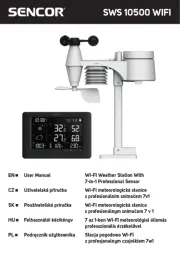
29 Juli 2025
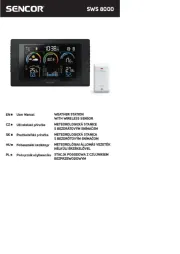
29 Juli 2025
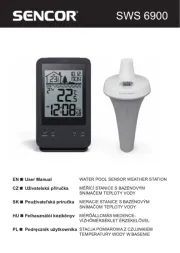
29 Juli 2025
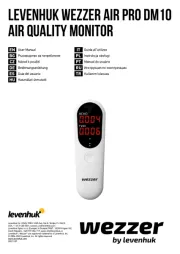
15 Juli 2025
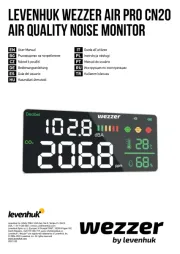
15 Juli 2025
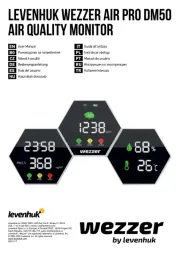
14 Juli 2025
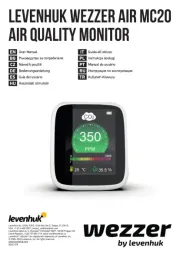
14 Juli 2025
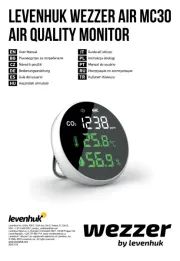
14 Juli 2025
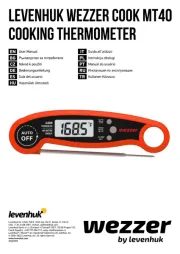
14 Juli 2025
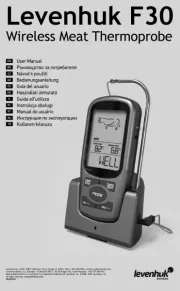
14 Juli 2025